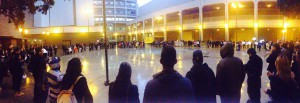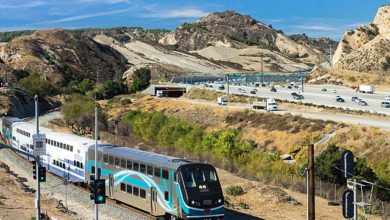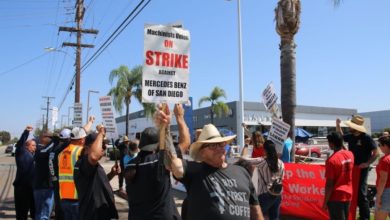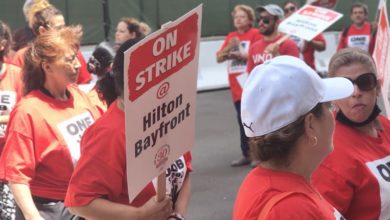
On November 20 in solidarity with thousands of people across the world, students from San Diego City College led a march from their campus to the Mexican Consulate, shutting down Broadway in downtown San Diego. On the route the students stopped at the San Diego Civic Center, which is the heart of City Hall and created a large circle to chant and hold a moment of silence for the 43 missing education students from Ayotzinapa, Guerrero, Mexico. The march was organized by TAINH and Students in Action, two student organizations active on the urban college campus.
From there the students continued to the Consulate where they met more protestors who had gathered in front of the building. Aztec Dancers gathered and danced before the speakers shared their thoughts, including two family members of the students who were kidnapped. The street in front of the building was shut down for several hours while people stood in solidarity and held pictures of the youth that were kidnapped.
The actions held internationally follow the leadership of the Mexican people that have risen in opposition to the narco-violence and government collaboration, many times the two intermixing, making it difficult to tell who is who.
The students from the teachers’ college in Guerrero are educated on the principles that were set forth during the Mexican Revolution, two of which they hold in high esteem, which are a free education and agrarian land reform. The school also educates the students on revolutionary politics, which poses a threat to the narcogobierno or narcogovernment as some are calling it.
This struggle did not begin in September when the students went missing during a police attack, it is a struggle that has been happening since the 1960s and ‘70s when the government went on the attack against students and many were killed during those “dirty wars” as they have come to be known.
The struggle today is an extension of that ongoing struggle between the leftist students in Guerrero, Mexico and the corrupt government and powerful drug cartels. Many Mexican immigrants are political and economic refugees from those struggles and are intimately connected to their families who face violence back home. There are more actions planned for the beginning of December and the next stage in this mass uprising is yet to be seen.






